
Nowy Pohost
(The brief historical review)
.
The period up to arrival of Slavs
.
Baltic peoples lived in the territories surrounding Nowy Pohost before arrival of Slavs. Their stay in these places in the past confirm by hill (Gorodzec) typical for Baltic peoples, in 3 km from Nowy Pohost; the cult stone under the name "Kravets" near from village Stary Pohost, which about Belarussian writer and policies Waclaw Lastowsky in 1923 has written; the legend about city "Bagotsk" with fortifications and towers. It existed between two lakes near to village Stary Pohost, and also a legend about beautiful White Madam, the owner the city "Bagotsk".
Slavs
Occurrence of Slavs has resulted by great resettlement of peoples between the 6th and 8th centuries AD. Direct contact with the rapidly developing German tribes predetermined the vector of the possible Slavic spread - the east of Europe. Germanic tribes became one of the "heirs" of the Great Roman Empire, and on the eastern bank of the Elbe the Slavs created their alliance, known in the annals as Slavia. An important factor that prompted the Slavs to resettlement was the pressure on them of the German tribes, which began to oust the Slavic tribe "LYUTICHI" from the Elbe. The Lutichi were forced to move to the east, towards Lithuania and Byelorussia. Hence the closeness of the terms "LYUTICHI and LITHUANIA". Slavs have moved in our district from the South and the West and have gradually mixed up with Baltic peoples, and have superseded them on the West. The Slavic term «Pohost or Pogost» is very ancient. Nestor (c. 1056 - c.1114) used it in The Primary Chronicle (4). The term "Pohost" was understood during old times much more widely, than today. "Pohost» meant the large administrative and church center (a place for rest of prince and for gathering a tribute) and place where there was a church and also a cemetery. Our Pohost particularly (both new, and old) was described by Waclaw Lastowsky (1883-1938). He went to school in Stary Pohost, which is located in 7-8 km from Nowy Pohost. He has described many customs of local population. Slavs who have occupied our grounds, referred to Slavic tribe – Kryvians.
Principality of Polotsk
Between the 9th and 12th century, the Principality of Polotsk emerged as the dominant center of Kryvians power on this territory, with a lesser role played by the principality of Turaŭ in the south.
It repeatedly asserted its sovereignty in relation to other centers of Rus', becoming a political capital, the episcopal see of a bishopric and the controller of vassal territories among Balts in the west. The city's Cathedral of the Holy Wisdom (1044-1066), though completely rebuilt over the years, remains a symbol of this independent-mindedness, rivaling churches of the same name in Novgorod and Kiev, referring to the original Hagia Sophia in Constantinople (and hence to claims of imperial prestige, authority and sovereignty). Cultural achievements of the Polatsk period include the work of the nun Euphrosyne of Polatsk (1120-1173), who built monasteries, transcribed books, promoted literacy and sponsored art (including local artisan Lazarus Bohsha's famous "Cross of Euphrosyne," a national symbol and treasure stolen during World War II), and the prolific, original Church Slavonic sermons and writings of Bishop Cyril of Turau (1130-1182).
The Old East Slavic name, Polotesk, is derived from the Polota river, that flows into Dvina nearby. The Vikings rendered that name as Palteskja, or Paltejsborg.
Polotsk is one of the most ancient cities of the kryvians Slavs. It was mentioned for the first time by the Primary Chronicle (4) in 862 (as Полотескъ, /poloteskŭ/), together with Murom and Beloozero. The Norse sagas describe the city as the most heavily fortified in all of Rus (6).
Polotsk united the neighboring territories until 9 centuries. Its aspiration has been directed basically on the West and the South. Prince of Polotsk Brachislav have grasped present region of Braslaw at Lithuanians and Latgallians, which lived here in VII - IX centuries (7). The region of Braslaw became a part of the Polotsk Principality in XI. Cconsolidated fortress Braslaw has been constructed by Slavs in the won territory. Braslaw (Belarusian: Браслаў; Russian: Браслав, Breslav; Lithuanian: Breslauja; Polish: Brasław) is the city in the present Vitebsk Province of Belarus, the administrative center of the Braslaw district, there is on distance of 40 km from Nowy Pohost.
The place of rest for travelers under the name Pohost has been based lengthways the road from Polotsk to Braslaw, (in 7-8 km from existing nowadays Nowy Pohost). It was settled down on on the hill between two lakes, on the place of legendary city "Bagotsk", and near to existing nowadays village Stary Pohost.The Principality of Polotsk has weakened however and has become a subject of territorial dispute between the The Grand Duchy of Lithuania, Crusaders, and Tatar-Mongols.
The Grand Duchy of Lithuania
In the 13th century, the fragile unity of Kievan Rus' disintegrated due to nomadic incursions from Asia, which climaxed with the Mongol Blue Horde's sacking of Kiev (1240), leaving a geopolitical vacuum in the region. The East Slavs splintered into a number of independent and competing principalities. Due to military conquest and dynastic marriages the Belarusian principalities were acquired by the expanding Lithuania, beginning with the rule of Lithuanian King Mindouh (Mindaugas) (1240-1263). From the 13th to 15th century, Baltic, Belarusian and Ukrainian lands were consolidated into the multi-ethnic Grand Duchy of Lithuania, with its capital initially in Horodno or Kernavė, later in Navahradak (now in western Belarus) or Voruta, Trakai and finally in Vilno (Vilnius).
The Lithuanians' smaller numbers and lack of their own written language in this medieval state gave Ruthenians (present-day, Belarusians and Ukrainians) very important role in shaping Lithuanian political, religious and cultural life, and further assimilation between the Slavs and Balts occurred. Owing to the predominance of East Slavs and Eastern Orthodox faith among the state's population, Ruthenian language was widely used for the state chancery, legal, diplomatic and judicial needs until 1696, when it was eventually replaced by Polish (9). Polatsk became part of the Grand Duchy of Lithuania in 1307, and it is said to have been the main center of trade in the state.
As to region of Braslaw including Pohost, this territory appeared within the limits of Grand Duchy of Lithuania even earlier, as a result of territorial disputes between several Lithuanian princes. There was a fight between Lithuanian King Mindouh (Mindaugas) and his sons in 1244 under Braslaw (7).
In 1386 is mentioned the trading settlement Druja on the river Dvina in M. Stryjkovsky's chronicle for the first time (10).
The basic road from Druja to Glubokoje and Minsk was crossed with the road Polotsk-Braslaw to 8 km from Pohost. Here, on a crossroads of roads, the new stopping place has been based for the rest and changes of horses under the name Nowy Pohost.
/Nowy Pohost is already repeatedly mentioned in Lithuanian Metrics in 1386-1505, in connection with judgments concerning various receivership proceeding between inhabitants of this place (11).
/
The Polish king and Grand duke of Lithuanian Alexander gives Nowy Pohost and Ikazń together with surrounding villages to J. Sapeha (the Secretary of king Alexander) in 1499. He, as the owner, has made the decision to lift the status of settlements and to base Catholic Parish and to construct churches in Ikazń and Nowy Pohost. He has received sanction on this from the king Sigizmund in 1509 (12).
Lithuanian chancellor Leu Sapeha (the following owner of these places) has carried out of this idea and has organized construction of the wooden church, school, and hospitals in Nowy Pohost in 1593. My ancestors on the maternal and paternal lines took an active part in
the construction, in particular Jan Malawko, who had a lot of land and forests
in the vicinity of Pohost. Later, this
church was rebuilt many times and restored. Another our ancestor JanMalawko-Murawski was actively involved in the restoration of 1859, from which
we have the opportunity to begin our Parentage research.
Thus, 1593 is considered as a year of the basis Catholic Parish and a church in Nowy Pohost, which subsequently repeatedly collapsed in days of wars, because of fires and in days of atheism in the USSR, however built up again. Very detailed information about the history of Catholic parish and about village Nowy Pohost are given in the book of Ks. Tadeusz Krahel (13), issued under the initiative of Bishop Edvard Kisiel (14), which have been born in territory of Nowy Pogost parish, and also in the work of Hedemann (15).
There was also a wooden temple of Sacred Michael in Nowy Pohost, in which prayed Uniats and peoples of other concessions. The population of Nowy Pohost was different: Poles, Byelorussians, Russian, Jews, Tatars, Lithuanians, etc. nationalities.
In 1600 the owner of N. Pohost becomes Jerzy Holoniszcza; Wasilisa Chrołowna Doroszkowska Juriowa Holeniszczewa sells it again to Leu Sapeha in 1614. With 1711 the place belonged to Stanisław Bieniecki, then to Stanislaw Burzyński, and at last to Franciszek Jundził (12, 13, 15).
Area of Braslaw on which Nowy Pohost was located, was long arena of numerous wars and a subject of territorial disputes between Poland and Moskovia, and also Crusaders, Lithuanians, Latgallians and Vikings.
Union with Kingdom of Poland did not prevent territorial losses of the state to the rising power of Muscovy and finally in 1795, the Polish-Lithuanian Commonwealth was destroyed by the partitions among Imperial Russia, Prussia and Austria. However, already after the second division in 1793 for 1918, Nowy Pohost appeared within the limits of Russian empire.
Nowy Pohost in structure of Russian empire (1793-1918)
The territory with Nowy Pohost has departed to Russian empire in 1793. The border with two more years existing Poland, appeared then all in several kilometers. Administration control of territory has changed territorially. Nowy Pohost began to concern to district of Disna. Russian empire differed from the plundered Polish-Lithuanian state by absence of democracy. Orthodox Church became by dominating religion. Uniat Church has appeared in especially difficult position. Living in Nowy Pohost Poles Uniats and people of other nationalities have been compelled to serve as gun meat in numerous wars in different regions of huge Russian empire and behind its limits (in Port Arthur, Finland, on Caucasus). In days of the First World War this territory repeatedly appeared arena of bloody fights of the Russian and German armies. The new Orthodox Nikolaev church has been consecrated constructed of a stone and a brick in pseudo-Russian style on September 10, 1878 in Nowy Pohost. To Orthodox Church concerned at that time 2968 believers and Catholic parish totaled 3569 believers ( 12).
Nowy Pohost in independent Poland between two wars (1919-1939)
The end of the First World War by the victory of the Antanty countries has opened an opportunity for reception of independence for much peoples. The head of revived Polish state Józef Piłsudski, who has been born in 100 km near Nowy Pohost, aspired to expand borders of again independent Poland to the sizes with which it borrowed till 1772 (before partitions of Poland). It was not possible to realize this plan in full, however after bloody Polish-Soviet war in 1920 (in which different inhabitants of Nowy Pohost were in both resisting armies), and also according to the Riga contract, NOWY POHOST appeared again within the limits of new and independent POLAND. It again became the place in which settled down administration (gmina). Nowy Pohost belonged to region of Braslaw, which in turn submitted to Wilno. This district appeared in the most northeast part of Poland and concerned to so-called «kresy północno-wschodnie». The population was multinational: Byelorussians, Poles, Russian, Jews, Tatars, Lithuanians, etc. Less half of population owned the Polish language in the beginning, however soon it became dominating, though with specific northeast accent. The Polish Government cared about development of this district in which the agricultural production prevailed. Shops and others serving enterprises, processing agricultural products began to open. Jews were their owners. The majority of the buildings constructed by them were kept till now. The market was organized on Sundays. During religious holidays – religious solemn actions. Peasants got the land, wood, agricultural animals and stock, and moved on farms. My grandmother Zofia Murawska also has located on the farm near to Pohost. My father Stanisław Kurłovicz has gone to Wilno to study music. After the termination of study he began to work as the organist in churches of Opsa, Ikazn and later in Nowy Pohost. The railway Krulevshchizna - Woropaewo – Druja has constructed in 1938. The railway station «Zori» has been equipped in the village Nowy Pohost.
The list of settlements (villages, manors, farms) which belonged to Catholic Parish of Nowy Pohost in 1931(13) is :
Aułasy, Antonowce, Augustówka, Biernowiastka, Borek I i II, Bielowce, Borodzińce, Borsuczyzna, Bildziuki, Bikierowszczyzna, Borówka, Biruki, Biertowszczyzna, Buda I i II, Czechowszczyzna, Chibowszczyzna, Czepuki, Czyżewszczyzna, Czarny Ruczaj, Ciepła Góra, Charłapowszczyzna, Zmitraki, Dubowka, Dzienisy, Dziechciary, Dworzyszcze I i II, Girnuty, Girsy, Galijewszczyzna, Grzybowszczyzna, Harbaczonki, Hołobka, Jundzilowo, Józefowo, Janowo, Janiżki, Janopol, Koleśniki, Kulniowcy, Koty, Kołhanowszczyzna, Kuperelewo, Kowszelewo, Krasnoje-Kazionoje, Kowalewszczyzna, Kołonica, Kaskowszczyzna, Krasnoje, Kisłowszczyzna, Krukowszczyzna, Kopanka, Komarowszcczyzna, Komarowo, Karczy, Linia, Lady, Lintorowszczyzna, Łuczki, Ładunicha, Mikołajówka, Milejki, Malinowo, Myszki, Mociewki, Migilany, Majorowszczyzna, Miecieli, Malinówka, Malinowszczyzna, Nowohrudy, Nowy Pohost, Ostrówki, Olchówka, Ostrowlany, Podrzeczki, Pietkunowszczyzna, Pielniwo-leśniczówka, Paszy, Pilaty, Piszczuryno, Podsudzielewszczyzna, Podhnojka, Pustolowszczyzna, (Pustonowszczyzna), Pietrowszczyzna, Paszki, Piestuny I-IV, Podborć, Puszałaty, Podozierze, Pomansówka, Rymarowszczyzna, Radziwonowszczyzna, Rzeczki, Repiszcze, Rażon, Ruczaj, Surowcy, Stary Pohost, Stary Borcy, Strażniki, Zofjówka, Sanadworcy, Suchalino, Szestakowszczyzna, Szendzino, Spokojność, Trzeciaki, Terespol I i II, Trybuchowwszczyzna, Usowćy, Wierciei, Wozowniki, Wołczki, Wysokie, Wołkowszczyzna, Wasilewo, W asilówka, Zaborze, Zielonka, Zacisze, Zaborz-Kazione,Żwiranka I i II, Żerebcy, Żydówka, Rumiszcze; zaścianki: Wołkowszczyzna, Karczy, Dębówka, Stefanowo i majątek Stefanowo.
The period of the Second World War
On September 1, 1939, Germany, led by Adolf Hitler and the Nazi Party, invaded Poland according to a secret agreement with the Soviet Union. The mobilization has been declared in Poland, and living in Nowy Pohost militaries soldiers and reserve officers (including our relatives and familiar) have been called in the Polish army.
On September, 17, the Soviet Union has struck across Poland on the other hand according to pact Molotow-Ribentrop (so-called in the USSR an emancipating campaign). Nowy Pohost appeared in sphere of the Soviet occupation. Many of Polish soldiers and officers (including inhabitants of Nowy Pohost) appeared in the Soviet captivity. Ordinary soldiers have soon been released to houses, however officers have sent in concentration camp and many of them have been then killed (in Katyń). The Soviet authorities began to arrest also many categories of civilians (landowners, officials, engineers, clerics, foresters). The plan of reprisals has not been finished, as on June, 22, 1941 Germany attacked of the USSR, and military actions have promoted on the east. Germans also began to direct his order in Nowy Pohost. They began to destroy the Jewish population first of all. Some inhabitants of Nowy Pohost have been compelled to serve in German police, others began to wage guerrilla war with Germans, and the part of peoples aspired to continue peace work on the land, every day and night being in fear for the life. I shall stop more in detail on features of guerrilla movement in our district. It was diverse and pursued the different purposes. The official point of USSR view considers the guerrilla as valorous defenders of the Native land. Undoubtedly, such people were much, and they self-denyingly battled with Germans in large groups (both Polish, and Soviet) and have brought the huge contribution to affairs of route of fascists. However in vicinities of Nowy Pohost the extortionate gangs operated also, which were given out for the guerrilla. Some people meaningly went in gangs with the purpose of a profit; others have been compelled to move there as Germans have burn out their houses or have killed relatives. As to peace inhabitants, they suffered as from the gangsters, given out for the guerrilla and plundering peoples at night, and also from Germans who appeared in the afternoon and repaired punishments people to which there came guerrillas or gangsters at night. Byelorussians were basically in the Soviet guerrilla groups which actions were coordinated from Moscow. The Polish population battled with Germans in the Home Army or Armia Krajowa abbreviated "AK". Armia Krajowa was the dominant Polish resistance movement in World War II German-occupied Poland. The purpose of Soviet and Polish guerrilla completely coincided in the beginning of war (struggle against fascists). But by to the end of war there were serious contradictions. In spite of the fact that fighters of АК valorously battled to Germans, the Soviet guerrillas, army and NKVD. Stalin had the specific plans concerning the future of dependent from the USSR Poland. But fighters of АК battled for full independence of Poland. Conditions was heated especially after active participation of Polish guerrilla in Wilno Uprising. Operation Ostra Brama (16) was the armed struggle started by the Polish Home Army against the Nazi German occupiers of Wilno (modern Vilnius), during World War II. It started on July 7, 1944, as part of a Polish national uprising, codenamed Operation Tempest, and lasted until July 14. Although the Germans were defeated, on the following day the Soviet Red Army entered the city, and the NKVD started to intern Polish soldiers and arrest the officers. Several days later, the remains of the Polish Home Army retreated into the forest, and the Soviets were in control of the city. Therefore, what started as a Polish underground uprising against the Germans ended up as a Soviet victory.
General Krzyżanowski wanted to group all of the partisan units into a re-created Polish 19th Infantry Division. However, the advancing Red Army entered the city on July 15, and the NKVD started to intern all Polish soldiers. On July 16, the HQ of the 3rd Belorussian Front invited Polish officers to a meeting and arrested them.
The internees, almost 5,000 officers, NCO's and soldiers, were sent to a provisional internment camp in Miedniki, a Vilnian suburb (modern Medininkai)। Some of them were given the option of joining the 1st Polish Army which was integrated into the Soviet armed forces, while the majority were sent to prisons and GULAGs in the USSR
Soviet Union and Polish communists viewed the underground loyal to the Polish government in exile as a force which had to be removed before they could gain complete control over Poland. Future General Secretary of PZPR, Władysław Gomułka, is quoted as saying: "Soldiers of AK are a hostile element which must be removed without mercy". Another prominent Polish communist, Roman Zambrowski, said that AK had to be "exterminated".(17).
My Father and other relatives were members of special group of AK in Nowy Pohost. The diversify group watched movement and plans of Germans and reported on them to management of АК in Braslaw and Wilno by confidential liaison channels. My father has avoided reprisals of NKVD due to strict conspiracy. However many inhabitants of Nowy Pohost (members of АК) have been arrested and subjected to repression. It was dangerous even for mentioning about them. As to Soviet guerrilla, they have deserved respect, award, the privilege and glory on behalf of the Soviet government. The winner is always right!
The post-war period in structure of the USSR
The Soviet authority has started prompting his orders. First of all, administrative submission of settlement has been changed. Nowy Pohost began to belong to the created region of Miory, which in turn was included first into structure of Vilejka area (oblasć), later into Molodzechno area, further in Polotsk and at last in Vitebsk area.
Mass violent collectivization of agricultural possession began since 1949. The reprisals, started in 1939, have been continued. NKVD has the concrete plan of reprisals according to which every night someone from Nowy Pohost took away by special black machines. Reprisals have stopped only after Stalin's death in 1953.
People, violently incorporated by collective farm, have been compelled working without the salary. They lived due to the personal plot (0.30-0.50 hectare). Besides, they could not replace the residence and works, as he did not have passports. Those lucky beggars, who managed to receive passports, leaved for the nearby cities: Polotsk, Vitebsk, Minsk, and also in close located republics of Baltic, where the living standard of the population was supported by the Soviet Government at higher level. Popular places of resettlement of the population from Nowy Pohost were: Daugavpils and Riga in Latvia, Ignalina and Vilnius in Lithuania. There are a plenty of my friends living until in independent Baltic States.However, the life was gradually adjusted. The Soviet State guaranteed to inhabitants free-of-charge training, health services and a provision of pensions. The USSR became very super power with huge natural resources. Khrushchev, the head of USSR, has put forward idea of construction of communism in the USSR within 20 years.
The planned economy, based on the socialized property, was however not effective. There were no articles of prime necessity and foodstuffs in shops frequently. I was convinced personally in an inefficiency of socialist agriculture and manufacture when I worked as the agronomist and chairman of collective farms in Braslaw region in 1971-1973. Collective farmers have not been materially interested in efficiency of work. The public property was plundered, the initiative of experts torpedoed by numerous instructions and checks of regional chiefs. Numerous attempts to reform economy in the framework of existing system did not bring of results. Gorbachev, the new young leader of USSR, has conceived reorganization in this connection, which promoted development of democracy and publicity, has allowed people to go abroad, however finally has led to disorder of the USSR.
It is a favorite place of rest for the local population!
Perestroika
Opening and restoration of Catholic church was the main event during perestroika in Nowy Pohost. Believers have collected money, have invited priest from Poland and have started repair of the Church with the huge enthusiasm. The big contribution to reparation and restoration of church and belfry have brought master Chesław Kurłiovicz, Jusef Stawicki, Peter Murawsky and many other inhabitants.
Orthodox also cans possibility to pray in Sacred Michael updated church.
Reorganization has led to independence of Belarus. Nowy Pohost is now in Belarus territory, near to borders with Latvia and Lithuania.
Nowy Pohost in independent Belarus
Now my inhabitants of Nowy Pohost not serve in army in such hot points as Vietnam, Afghanistan, the Chechen Republic, etc., outside Belarus. However, it is necessary to pay for independence also. Socialism has disaccustomed people to enterprise. Young people do not want to work on the land. Local collective farm "Rassvet" has practically broken up because of unprofitable ness, and many people have lost work. The period of desolation has come there; many empty houses in village, unemployment and accordingly drunkenness The majority of mentioned villages do not exist around Nowy Pohost any more.
The present management of Belarus is still the supporter of a planned economy. Reforms are carried out very slowly in the country. The last
dictator of Europe Lukashenko severely finishes with oppositional supporters of
democracy and economic reforms. However, the majority of the population supports the rate of the government, being afraid still the worse. People have tested many difficulties in the past. They will be ready now to exist very modestly, if only there will be no new war!
There are the Village Soviet, some shops, school, ambulance station, hospital, veterinary polyclinic, post and forest office in Nowy Pohost (18).
Conclusion
Nowy Pohost is the village, the center of Rural Advice located near to border of Belarus with Latvia and Lithuania. Distance from Nowy Pohost up to modern regional center Miory - 20 km, up to Sharkowszczyzna -18 km, up to Brasław-40 km, up to Polotsk - 80 km, up to Minsk – 250 km, up to Vilnius through transition "Widzy" − 220 km, and up to Riga through transition "Urbany" − 300 km. The second-largest city of Latvia − Daugavpils is on distance in 85 km from Nowy Pohost.
I love my village, relatives and everybody living in Nowy Pohost.
I hope that the best times at them still ahead!BB
B
B।Boguslav Kurlovich
REFERENCES
.1. Каспарова К.В. Отзыв о статье Л.Д. Поболя "Железный век Белоруссии" http://www.archaeology.ru/ONLINE/Kasparova/kasp_otz_pob.html
2.http://spravkabas.ru/cubafe/488.htm
3. - http://www.pressmon.com/cgi-bin/press_view.cgi?id=1988323
4. Primary Chronicle http://en.wikipedia.org/wiki/Primary_Chronicle
5. Провинции на территории Беларуси в IX — XIV вв. http://expo2000.bsu.by/main_document.idc?id=65&ps=2
6. Polatsk http://en.wikipedia.org/wiki/Polatsk
7. История Браславского края http://sosnyrest.narod.ru/
8. Strona o Braslawiu i okolicach http://akson.sgh.waw.pl/~rj24115/braslaw/
9. Grand Duchy of Lithuania - http://en.wikipedia.org/wiki/Grand_Duchy_of_Lithuania
10. Maciej Stryjkowski - http://en.wikipedia.org/wiki/Maciej_Stryjkowski
11. Lithuanian Metrika http://www.belarusguide.com/culture1/texts/Metrika.html
12. Krz. J. i in.: Pohost. W: Słownik geograficzny. T. 8. Warszawa 1887 s. 519-521.
13. Krahel T.: 400 lat kościoła w Nowym Pohoście 1593 - 1993, Białystok, 1993.
14. Krahel T.: Arcybiskup Edward Kisiel, metropolita, białostocki. Wiad. Kościelne Archidiec. Biał. R. 1993 nr 1 s. 4-10.
15 Hedemann 0.: Historia powiatu brasławskiego. Wilno, 1930.
16. Wilno Uprising http://en.wikipedia.org/wiki/Wilno_Uprising
17. Rzeczpospolita, 02.10.04 Nr 232, Wielkie polowanie: Prześladowania akowców w Polsce Ludowej (Great hunt: the persecutions of AK soldiers in the People's Republic of Poland), last accessed on 7 June 2006 - http://www.rzeczpospolita.pl/specjal_041002/specjal_a_6.html
18. http://personal.inet.fi/tiede/kresy/p0005.htm
Other friendly pages on the Internet about Nowy Pohost and its vicinities:
.Новый Погост - http://globus.tut.by/nov_pogost/index.htm
http://nowypohost.blog.onet.pl/
http://braslawszczyzna.blog.onet.pl/
- http://foto-planeta.com/np/57532/novyy-pogost.html
http://ketrzyn-ostroleka-laskowiec.blog.onet.pl/
Miory w Europie http://www.miory.eu/modules.php?name=News&file=article&sid=18
10. Maciej Stryjkowski - http://en.wikipedia.org/wiki/Maciej_Stryjkowski
11. Lithuanian Metrika http://www.belarusguide.com/culture1/texts/Metrika.html
12. Krz. J. i in.: Pohost. W: Słownik geograficzny. T. 8. Warszawa 1887 s. 519-521.
13. Krahel T.: 400 lat kościoła w Nowym Pohoście 1593 - 1993, Białystok, 1993.
14. Krahel T.: Arcybiskup Edward Kisiel, metropolita, białostocki. Wiad. Kościelne Archidiec. Biał. R. 1993 nr 1 s. 4-10.
15 Hedemann 0.: Historia powiatu brasławskiego. Wilno, 1930.
16. Wilno Uprising http://en.wikipedia.org/wiki/Wilno_Uprising
17. Rzeczpospolita, 02.10.04 Nr 232, Wielkie polowanie: Prześladowania akowców w Polsce Ludowej (Great hunt: the persecutions of AK soldiers in the People's Republic of Poland), last accessed on 7 June 2006 - http://www.rzeczpospolita.pl/specjal_041002/specjal_a_6.html
18. http://personal.inet.fi/tiede/kresy/p0005.htm
Other friendly pages on the Internet about Nowy Pohost and its vicinities:
.Новый Погост - http://globus.tut.by/nov_pogost/index.htm
http://nowypohost.blog.onet.pl/
http://braslawszczyzna.blog.onet.pl/
- http://foto-planeta.com/np/57532/novyy-pogost.html
http://ketrzyn-ostroleka-laskowiec.blog.onet.pl/
Miory w Europie http://www.miory.eu/modules.php?name=News&file=article&sid=18




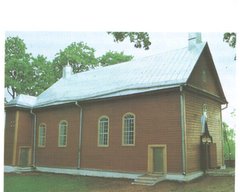
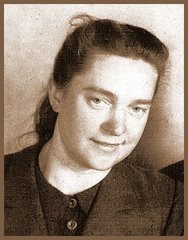

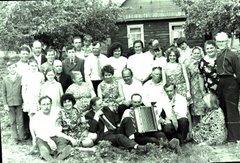





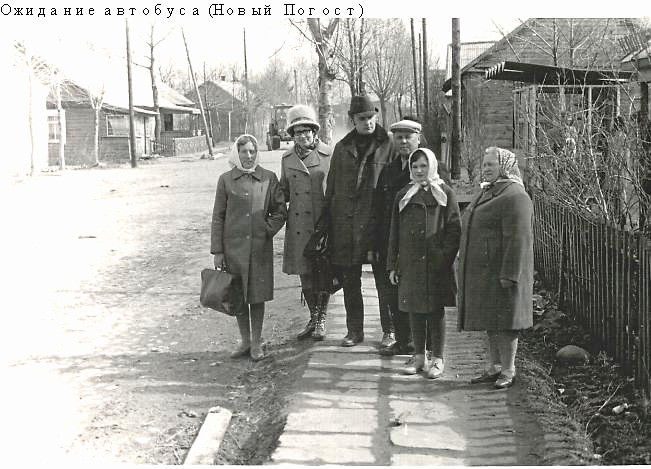





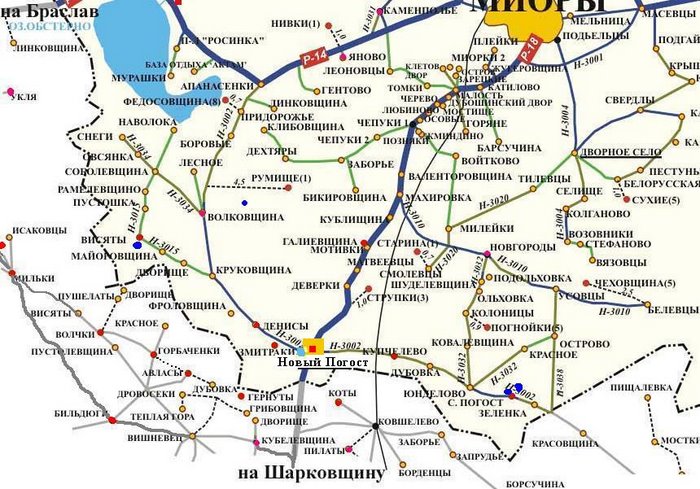

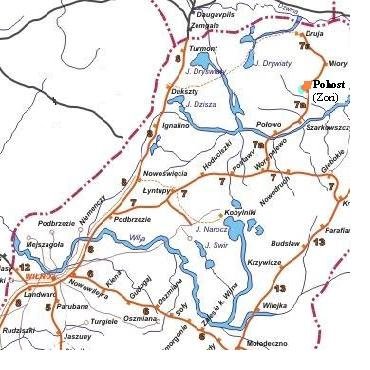



7 comments:
It is very fine, when people remember and write about the native land!
Our village has a long and interesting history.
Our ancestors have gone through very much (both fine and awful)!
Let memory of them will be embodied on the Internet,
and will be kept for the future generations!
Peter M.
Perth, Australia
Hey BK ,
I came across your blog My Native land and liked it.
I recently added a news widget from www.widgetmate.com to my blog Fat Loss : Fitness Blog . It is
completely free, it shows the latest news related to the topic you choose, and it just took me a couple of minutes to copy and paste the code onto my blogspot
template and set the keywords for the news. I thought it might interest you too.
This news widget is fully customizable and can show the latest news with heading,
description and pictures. Adding the news widget is a breeze and will be showing on your blog in no time.
Check it out at www.widgetmate.com.
Cheers, Alex Smith
Very cheeky I know but you wouldnt have info on this address would you, anything about the area would be appreciated, i think its near to your native area: kiwance 28 powiata lida woj-wilnogmina radon
thank you
john
johnjo28@lineone.net
uk
Dear John,
I thank you for interest to my articles.
It seems to me, that the information interesting you (In different languages) can be on specified here:
http://www.radzima.org/pub/pomnik.php?act=shownat&nazva_id=hrvoradu01
http://www.shtetlinks.jewishgen.org/Lida-District/rad-encyc.htm
http://www.polishroots.org/slownik/radunka.htm
http://www.cenzusowe.gratki.pl/1677201/posady/
http://books.google.com/books?id=kO2Ipnzm3fQC&pg=PA15&lpg=PA15&dq=kiwance&source=web&ots=HDOVA5dHfW&sig=lB1V5nk3gC_WyjkszC8lfXZvaek
Best regards,
Boguslaw
hello,
my name is alexandra Jaeckel, my mother's mother, shaumman, I believe is the spelling, had properties near nowy pohost...she has her best memeories of her summers in ostrowlany, there was also another shaumman estate...she cannot remeber the name..I will be bringing her back for a visit, she left when the war started in 1939, when she was 16...she is now 86 and I treasure this expedition we will take in august to try to find anything that may be left in her memories or still standing...she is wary, but I thought you might be able to help us know if there is anything left of those properties...she spent every summer of her life there, untill the war shattered her life, I grew up hearing the stories of her favorite place.
if you may have any information on visas to get into belarus, from warsaw....(excuse my ignorance, but is that the proper name of the country now?). we are US citizens, and if there is anything left of her families property. All were killed in the war....
thank you,
alexandra,
e-mail, ajaeckel@msn.com
Dear Alexandera,
Thanks you for your letter. Your surname Shaumman is very well-known in history!!!
I mention surname Shaumman in my Blog.
In Nowy Pohost there still were many pre-war constructions. Probably you mums finds out something familiar!?? Unfortunately, neighbouring manors have not remained.
Recently I was there on funeral of the relative. You can look my photos of modern village Nowy Pohost and a cemetery on the site - http://boguslaw1948.spaces.live.com/?lc=1049
The visa is required for visiting to Belarus. I advise you to address in Consulate. But I do not know details, as I am living in Finland.
You can reach to village Nowy Pohost from Minsk or Vitebsk by train, by bus or on the automobile.
Yours faithfully,
Boguslaw
Thank you, thank you, thank you.
If you ever come to america you have a family here already.
Alexandra
20.6.2008 00:46
Post a Comment